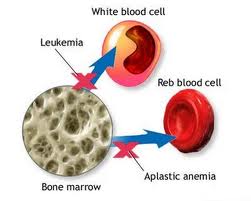 |
| courtesy by E D U |
Acute tonsillitis
(tonsillectomy)
Tonsillectomy is an invasive measures being undertaken to take the tonsils with or without adenoid (Adam Boeis, 1994: 337).Definition
Tonsillitis is the presence of general inflammation and swelling of tonsil tissue with a collection of leucocytes, el-dead epithelial cells and pathogenic bacteria in kripta (Adam Boeis, 1994: 330).
Tonsillitis is the presence of general inflammation and swelling of tonsil tissue with a collection of leucocytes, el-dead epithelial cells and pathogenic bacteria in kripta (Adam Boeis, 1994: 330).
Etiology
• Hemolitikus streptococcus group A.
• Pneumococcal.
• Staphylococcal.
• Haemofilus influezae.
Pathofisiologi
• The occurrence of inflammation in the area tonsila from the virus.
• Resulted in the formation of exudate.
• Cellulitis occurs tonsila and the surrounding area.
• Peritonsilar abscess formation.
• Tissue necrosis.
Symptoms
• Sore throat and dysphagia.
• Patients do not want to eat or drink.
• Malaise.
• Fever.
• Breath odor.
• Otitis media is one of the originators.
Management
• Bed rest.
• Provision of adequate fluids and light diet.
• Giving medications (analgesics and antibiotics).
• If no progress then the alternative measures that can be done is surgery.
Indications of surgery Indications of absolute
• incidence of pulmonary choir due to chronic airway obstruction.
• Hypertrophy of tonsils or adenoids with apnea syndrome during sleep.
• Excessive hypertrophy resulting in dysphagia and weight loss as a companion.
• Excision biopsy in suspected malignancy (lymphoma).
• Peritonsilaris recurrent abscess or abscess that spread to surrounding tissues.
Relative indication
All other indications for tonsillectomy action is considered as an indication of the relative.
Another indication that most can be received is:
• Recurrent tonsillitis attacks.
• Tonsil hyperplasia with functional disorders (dysphagia).
• Hyperplasia and obstruction which settled for 6 months.
• Not respond to treatment and therapy.
Contraindications
• Fever is not in the know the cause.
• Asthma.
• Systemic infection or chronic.
• Sinusitis.
Preparation of operations that may be done
• Laboratory tests (Hb, leko, bleeding time).
• Give an explanation to the client action and care after surgery.
• Fasting 6-8 hours before surgery.
• Give antibiotics as prophylaxis.
• Give premedication ½ hours prior to surgery.
Assessment
- Medical history related to the factor supporting the occurrence of tonsillitis and the bio-psycho-socio-spiritual. Blood circulation : Palpitations, headache at the time of change of position, decreasing blood pressure, bradycardia, body felt cold, pale extremities.
- Elimination : Changes in the pattern of elimination (incontinence uri / alvi), abdominal distension, bowel sounds disappearance.
- Activity / rest : There is a decrease in activity because of weakness of body, loss of sensation or parese / plegia, tiredness, difficulty in recuperating from seizures or muscle spasms and pain.The reduced level of consciousness, decreased muscle strength, general body weakness.
- Nutrition and fluids : Anorexia, nausea, vomiting due to increased ICT (intra-cranial pressure), impaired swallowing, and loss of sensation on the tongue.
- Nerve supply : Dizziness / syncope, headache, decreased visual field area / blurred vision, decreased sensation of touch, especially in the area face and extremities.
- Mental status : coma, weakness in the extremities, muscle paralise face, aphasia, pupil dilation, decreased hearing.
- Comfort : Tense facial expressions, headache, anxiety.
- Breathing : Shortened breath, inability to breathe, sleep apnea, the occurrence period of apnea in breathing pattern.
- Security : Fluctuation of temperature in the room.
- Psikolgis : Denial, disbelief, profound sadness, fear, anxiety.
Nursing problem and action plan
Ineffective breathing pattern associated with tissue damage or trauma to the respiratory center
Objective:Patients showed the ability to perform adequately with respiratory blood gas results showed a stable and good and the loss of signs of respiratory distress.
Plan of action:
• Exempt a patent airway (keep your head in a state parallel to the spine / as indicated).
• Perform suctioning if necessary.
• Assess the respiratory system function.
• Assess the patient's ability to do cough / business release secretions.
• Observation of vital signs before and after taking action.
• Observation for signs of respiratory distress (the skin becomes pale / cyanosis).
• Collaboration with the therapists in the provision of physiotherapy.
Impaired sense of comfort pain associated with physical trauma
Objective:Patients express the pain is reduced and shows a state of relaxed and calm.
Plan of action:
• Assess the level or degree of pain felt by patients in using the scale.
• Help the patients in finding the factors the precipitation on pain in feel.
• Create a peaceful environment.
• Teach it to a patien and demonstration of several ways of doing relaxation techniques.
• Collaboration in the provision of appropriate indications


